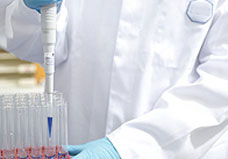| |
 |
|
|
|
|
|
|
Pre-eclampsia & Eclampsia |
|
|
What Is Preeclampsia?
Also referred to as toxemia, preeclampsia is a condition that
pregnant women can get. It is marked by high blood pressure
accompanied with a high level of protein in the urine. Women with
preeclampsia will often also have swelling in the feet, legs, and
hands. Preeclampsia, when present, usually appears during the
second half of pregnancy, generally in the latter part of the
second or in the third trimesters, although it can occur earlier.
What Is Eclampsia?
Eclampsia is the final and most severe phase of preeclampsia and
occurs when preeclampsia is left untreated. In addition to the
previously mentioned signs of preeclampsia, women with eclampsia
often have seizures. Eclampsia can cause coma and even death of
the mother and baby and can occur before, during, or after
childbirth.
What
Causes Preeclampsia and Eclampsia?
The exact causes of preeclampsia and eclampsia are not known,
although some researchers suspect poor nutrition, high body fat,
or insufficient blood flow to the uterus as possible causes.
What Is the Treatment for
Preeclampsia and Eclampsia?
The only real cure for preeclampsia and eclampsia is the birth of
the baby.
Mild preeclampsia (blood pressure greater than 140/90 that occurs
after 20 weeks of gestation in a woman who did not have
hypertension before; and/or having a small amount of protein in
the urine can be managed with careful hospital or in-home
observation along with activity restriction.
If the baby is pre-term, the condition can be managed until your
baby can be safely delivered. Your health care provider may
prescribe bed rest, hospitalization, or medication to prolong the
pregnancy and increase your unborn baby's chances of survival. If
your baby is close to term, labor may be induced.
The treatment for more severe preeclampsia (having vision
problems, lung problems, abdominal pain, fetal distress, or other
signs and symptoms) may require more emergent treatment --
delivery of the baby -- irrespective of the baby's age.
Other treatments include:
- Magnesium can be injected into the veins to
prevent eclampsia-related seizures.
- Hydralazine or another antihypertensive drug
to manage severe elevations of blood pressure.
- Monitoring fluid intake
|
|
|
|
Pre-eclampsia and Eclampsia - treatment of Pre-eclampsia
and Eclampsia, Pre-eclampsia and Eclampsia types, Disease medicines, Pre-eclampsia
and Eclampsia symptoms, Pre-eclampsia and Eclampsia and Disease symptoms,
Pre-eclampsia and Eclampsia symptoms Disease and diagnosis, Symptoms and
Solutions, Signs and Symptoms, type of Pre-eclampsia and Eclampsia, cause
common, common Pre-eclampsia and Eclampsia, Pre-eclampsia and Eclampsia
List, causes list, Infectious Pre-eclampsia and Eclampsia, Causes, Diseases
, Types, Prevention, Treatment and Facts, Pre-eclampsia and Eclampsia
information, Pre-eclampsia and Eclampsia: Definition, Pre-eclampsia and
Eclampsia names, medical Pre-eclampsia and Eclampsia, medical Pre-eclampsia
and Eclampsia and disorders, cell Pre-eclampsia and Eclampsia, Pre-eclampsia
and Eclampsia Worldwide, Pre-eclampsia and Eclampsia Research, Pre-eclampsia
and Eclampsia Control, Pre-eclampsia and Eclampsia Center, Digestive Pre-eclampsia
and Eclampsia Week, Information about Pre-eclampsia and Eclampsia, causes of
different Pre-eclampsia and Eclampsia, Pre-eclampsia and Eclampsia Articles,
Pre-eclampsia and Eclampsia and conditions, Health and Pre-eclampsia and
Eclampsia, Pre-eclampsia and Eclampsia Patients, Pre-eclampsia and Eclampsia
and Sciences, causes of alzheimer's Pre-eclampsia and Eclampsia, Pre-eclampsia
and Eclampsia causes, alternative medicine heart Pre-eclampsia and Eclampsia,
body ailments, Pre-eclampsia and Eclampsia medicines, medical antiques, type
of blood Pre-eclampsia and Eclampsia |
|
|





